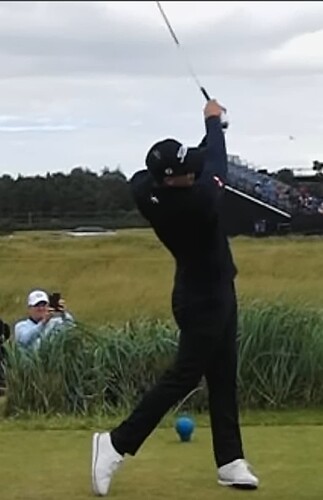Following on from the Youtube discussion on the podcast

Hogan’s right hand does turn over, it’s just later when right arm is parallel to ground after impact in this example of his PW swing in 1953:
The key thing is how obtuse his release angle is, look how far out the shaft and clubhead is instead of up at that point.
Here’s another example later in the follow-through continuing this release of his driver swing in 1953:
I’ve only seen Mickey Wright be able to replicate this type of release, and Adam Scott in 2016 when he was the best ball-striker in the world that year and for his career.
Can you put up some images of Adam Scott from 2016? I would love to see that.
Sure! Here’s Adam Scott hitting a driver in 2016 Open:
And also Mickey Wright, I know you didn’t ask but this one was a good example as well. Her hair makes it seem like she’s still looking down on where the ball was but she’s not, eyes are pointed where her right shoulder is pointing in this image:
Now, to level out the shoulders to the spine after impact, the back hand has to overtake the front but it doesn’t have to be early.
The release point is typically where the tilt of the shoulders are pointing at impact, if you can see top of grip like in that image of Ernie Els you posted before that release point, that’s an inaccurate flip.
Past that point it’s OK you just have to make sure the release angle between front arm and club is obtuse until back arm is vertical, the opposite would be Luke Donald with a very acute release angle.
I prefer to view this halfway between impact and P4.





